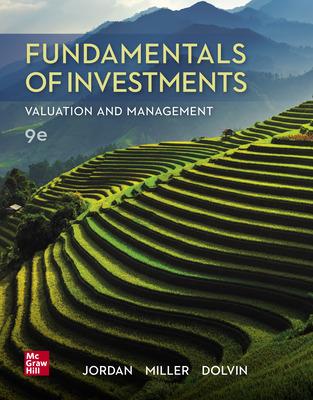1)
Last month, Standard Systems analyzed the project whose cash flows are shown below. However, before the decision to accept or reject the project took place, the Federal Reserve changed interest rates and therefore the firm's cost of capital (r). The Fed's action did not affect the forecasted cash flows. By how much did the change in the r affect the project's forecasted NPV? Note that a project's expected NPV can be negative, in which case it should be rejected.
| Old r: | 10.00% | New r: | 11.25% | |
| Year | 0 | 1 | 2 | 3 |
| Cash flows | $1,000 | $410 | $410 | $410 |
2)
Hart Corp. is considering a project that has the following cash flow data. What is the project's IRR? Note that a project's IRR can be less than the cost of capital or negative, in both cases it will be rejected.
| Year | 0 | 1 | 2 | 3 |
| Cash flows | $1,000 | $425 | $425 | $425 |
3)
Murray Inc. is considering Projects S and L, whose cash flows are shown below. These projects are mutually exclusive, equally risky, and not repeatable. The CEO wants to use the IRR criterion, while the CFO favors the NPV method. You were hired to advise Murray on the best procedure. If the wrong decision criterion is used, how much potential value would Murray lose?
| r: | | 6.00% | | | | |
| Year | | 0 | 1 | 2 | 3 | 4 |
| CFS | | $1,025 | $380 | $380 | $380 | $380 |
| CFL | | $2,150 | $765 | $765 | $765 | $765 |
4)
Wiley's Wire Products is considering a project that has the following cash flow and cost of capital (r) data. What is the project's MIRR? Note that a project's MIRR can be less than the cost of capital (and even negative), in which case it will be rejected.
| r = | 11.00% | | | |
| Year | 0 | 1 | 2 | 3 |
| Cash flows | $800 | $350 | $350 | $350 |






